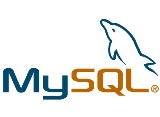 After installing MySQL database server packages you need to configure the MySQL database. The commands are same for CentOS6,5,4
After installing MySQL database server packages you need to configure the MySQL database. The commands are same for CentOS6,5,4Starting the MySQL database service(daemon) for the first time.
[root@server ~]# service mysqld start
or
[root@server ~]# /etc/rc.d/init.d/mysqld start
Initializing MySQL database: Installing MySQL system tables...
OK
Filling help tables...
OK
To start mysqld at boot time you have to copy
support-files/mysql.server to the right place for your system
PLEASE REMEMBER TO SET A PASSWORD FOR THE MySQL root USER !
To do so, start the server, then issue the following commands:
/usr/bin/mysqladmin -u root password 'new-password'
/usr/bin/mysqladmin -u root -h localhost.localdomain password 'new-password'
Alternatively you can run:
/usr/bin/mysql_secure_installation
which will also give you the option of removing the test
databases and anonymous user created by default. This is
strongly recommended for production servers.
See the manual for more instructions.
You can start the MySQL daemon with:
cd /usr ; /usr/bin/mysqld_safe &
You can test the MySQL daemon with mysql-test-run.pl
cd /usr/mysql-test ; perl mysql-test-run.pl
Please report any problems with the /usr/bin/mysqlbug script!
[ OK ]
Starting mysqld: [ OK ]
Add MySQL service to Linux startup
[root@server ~]# chkconfig mysqld on
Login into MySQL database for the first time
[root@server ~]# mysql -u root
Welcome to the MySQL monitor. Commands end with ; or \g.
Your MySQL connection id is 2
Server version: 5.1.61 Source distribution
Copyright (c) 2000, 2011, Oracle and/or its affiliates. All rights reserved.
Oracle is a registered trademark of Oracle Corporation and/or its
affiliates. Other names may be trademarks of their respective
owners.
Type 'help;' or '\h' for help. Type '\c' to clear the current input statement.
mysql>
Set the root password for all the local domains of the server. (use ur own domain names)
Set the root password for all the local domains of the server. (use ur own domain names)
mysql> set password for root@127.0.0.1=password('mypassword123');
mysql> set password for root@localhost.localdomain=password('mypassword123');
Deny anonymous users to MySQL database
mysql> delete from mysql.user where user='';
mysql> exit
Bye
Login into MySQL database with password
[root@server ~]# mysql -u root -p
Password <enter the password>




 Author
Author

 LABELS:
LABELS: 



0 comments:
Post a Comment